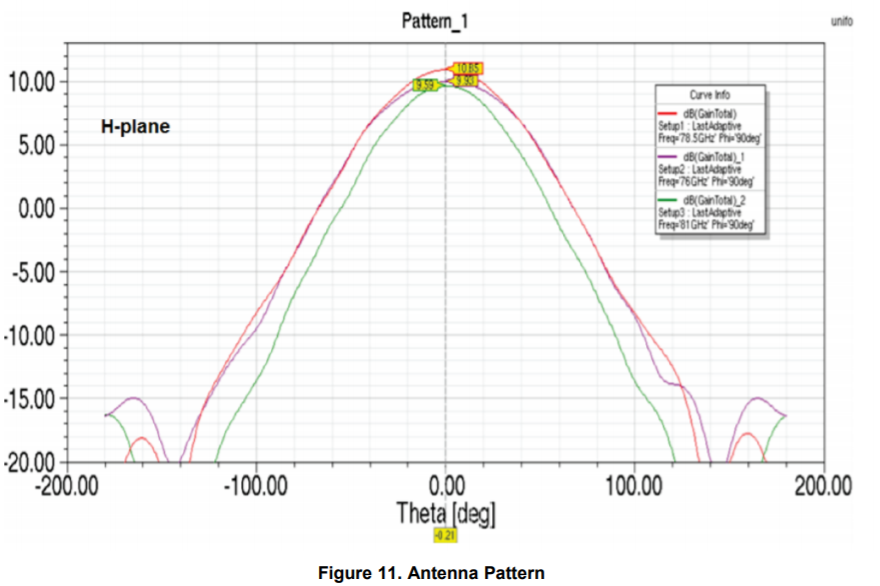Other Parts Discussed in Thread: TIDEP-01011, DCA1000EVM, AWR1843
Hello,
I am a beginner on the TI mmWave radar. I learned a lot from the examples from the automotive and industrial toolboxes. Thanks in advance.
Currently, I am using the AWR1843EVM, I have some questions regarding to the FoV settings in the Azimuth and Elevation planes in the "mmWave Medium Range Radar Lab" and "mmWave Parking Lab".
I have learnt the basic chirp settings in "mmr_config_chirp_design_USRRxx.h" and played the parameters in the mmwave sensing estimator. I have five questions listed as below.
(1) Based on the requirements, max range, max velocity, range resolution, etc, both labs have defined particular chirp parameters used in "mmr_config_chirp_design_USRRxx.h". However, in the tutorial it also claimed the field of view in Azimuth and Elevation plane. For example, FoV of Azimuth from -50 degree to +50 degree, FoV of Elevation from -15 degree to +15 degree (reference: TIDEP-01011). In the demo code, mmr_18xx_dss and mmr_18xx_mss, where can I define those FoV for the Azimuth and Elevation plane? I am using mmWave SDK 3.5 and mmWave automotive toolbox 3.2.0
(2) In the "mmWave Medium Range Radar Lab", if I want to use only one mode, say the USRR subframe only. I should use "SUBFRAME_CONF_USRR" instead of SUBFRAME_CONF_MRR_USRR. However, I still need to include either mrr_config_chirp_design_MRR120.h or mrr_config_chirp_design_MRR80.h, otherwise it will give me compiling errors. Since I just want to want the single mode, say mrr_config_chirp_design_USRR50.h, will either mrr_config_chirp_design_MRR120.h or mrr_config_chirp_design_MRR80.h influence the USRR mode by including them?
(3) Thanks for giving more example in the chirp design. If I want to use the mrr_config_chirp_design_USRR50.h, how can I retrieve the design requirements, like the max range, max, velocity, range resolution, velocity resolution based the parameters defined in mrr_config_chirp_design_USRR50.h? Any reference for this header file?
(4) If I want to get data before the Clustering and Tracking algorithms run on the AWR1843, how should I modify the code to do it? Because I want to send those data to a local PC and run the clustering and tracking algorithm there. I also have a DCA1000EVM, should I use the UART or DCA1000EVM?
(5) If I want to plot the doppler-range FFT heat map and azimuth-range FFT heat map of the mmWave Medium Range Radar Lab. How should I do it?
I know I ask a lot. Thanks a lot!!!
Best,
Hang



